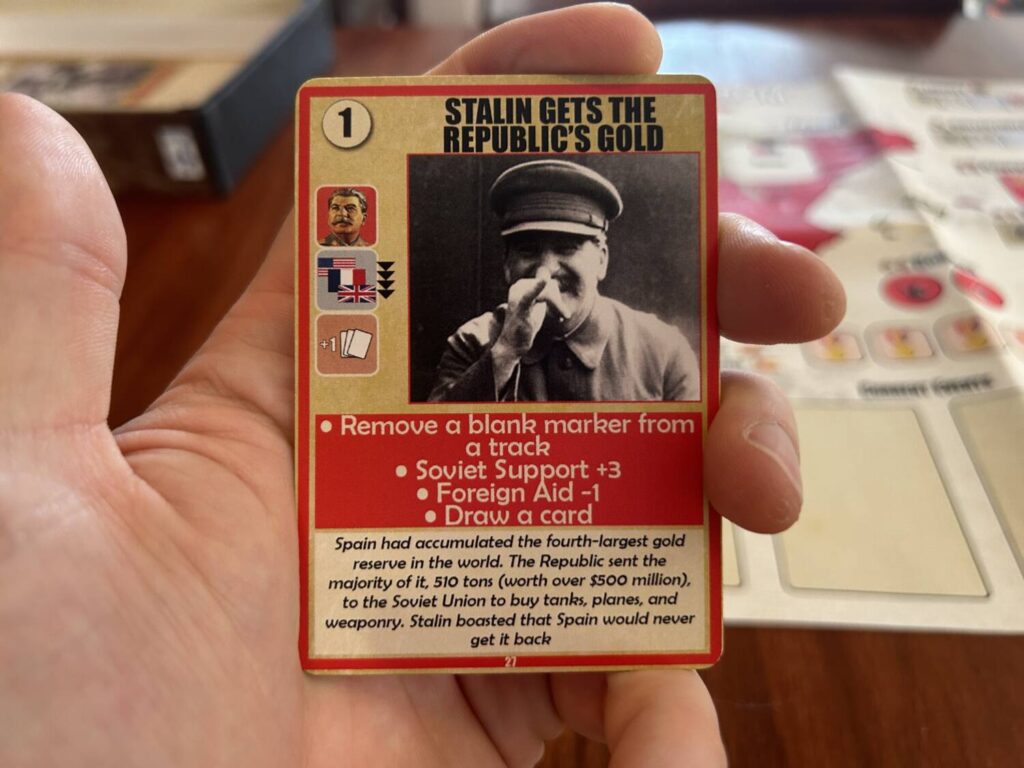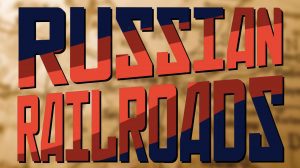I heard about Land and Freedom: The Spanish Revolution and Civil War through an interview with designer Alex Knight on the wargaming podcast Beyond Solitaire. It’s the first time an interview with a designer compelled me to seek out one of their games. He was exceptionally well-spoken in regards to what he was trying to accomplish with the design, and what about the setting drew him in. You can see his passion in the results. Land and Freedom is great.

They Burned the Churches up in Harlem
World War II has been, and will continue to be, done to death. That’s quite alright. The convenience of the setting is such that it’s understandable. The Spanish Civil War, though geographically and chronologically adjacent to WWII, has largely escaped the board game treatment. Resist!, a very good (and exceedingly difficult) solo game from last year, depicts the actions of the Spanish Maquis as they fought against the fascists following Franco’s victory, but that doesn’t cover the Spanish Civil War itself.
Land and Freedom, from publisher Blue Panther, does. This is a game for three players, with each taking up the mantle of a faction on the Republican side. The Moderates, Communists, and Anarchists have to work together to stop the fascists from seizing power.

Stopping the fascists is difficult. It takes a good amount of military coordination, spread across four fronts. Each faction has its own deck of cards, and each player chooses one card to play per turn. These cards can be used for their events, which are strong and single-use, or they can be played for one of a few weaker actions. If you choose the latter, the card is added to your tableau, which slowly improves those weaker actions.

Each of the twelve rounds comes with a Test, which will both add fascist troops to the map and give you a front to focus on. As a collective, you will be rewarded for passing, or punished for failing. If you successfully survive three Years without the fascists claiming victory on any two of the fronts, you’re home free. Easier said than done.
The Flames Were Everywhere, But No One Seemed to Care
Land and Freedom is not a cooperative game. There’s a lingering question: Who will be in charge when the fascists are defeated? The entire time you are navigating the high-wire act of fighting the fascists, you’ll also be taking passive aggressive swings at each other. The right portion of Land and Freedom’s board is occupied by a series of tracks, all related to political rule. Each faction has a series of conditions to meet in order to be in charge.

In addition to adding troops, many of your cards and actions adjust the various tracks, changing the political winds. It is unlikely, though not impossible, that you will be able to help with troops on the ground while also increasing your political fortune. When you are in charge, come the end of each round, you put a faction token in the Bag of Glory (I am not making that up), whence tokens will be drawn that ultimately determine the winner.
The party with the most drawn tokens at the end of the game—assuming you survive to the end of the game—is the new leader of Spain. It is in everyone’s interest to more or less evenly split the time in charge, so your resources are mostly going to fighting the war, but is it in your interest? Deciding whether or not to prioritize your faction’s welfare over the concerns of the whole, that’s what it’s all about. You don’t have to work together.
If you don’t, you’ll lose. Badly. In half a dozen games, my group has made it to the end once. Mistakes were made. Learning from some of those mistakes was a fun experience, so I won’t tell you about them here. It’s about picking your spots. Knowing when to push for a win, and when to lose. Knowing when one of your allies has had political power for long enough, and snatching it away. This is a beautiful, challenging ecosystem.
Surprisingly easy to teach, tense and incredibly funny to play, Land and Freedom is a great game. It is not a game for people who need perfect information. It is not a game for people who are afraid of things going wrong. It is, however, a wonderful way to spend 75 minutes if you love to watch a good story unfold. I think it’s exceptional.












Add Comment